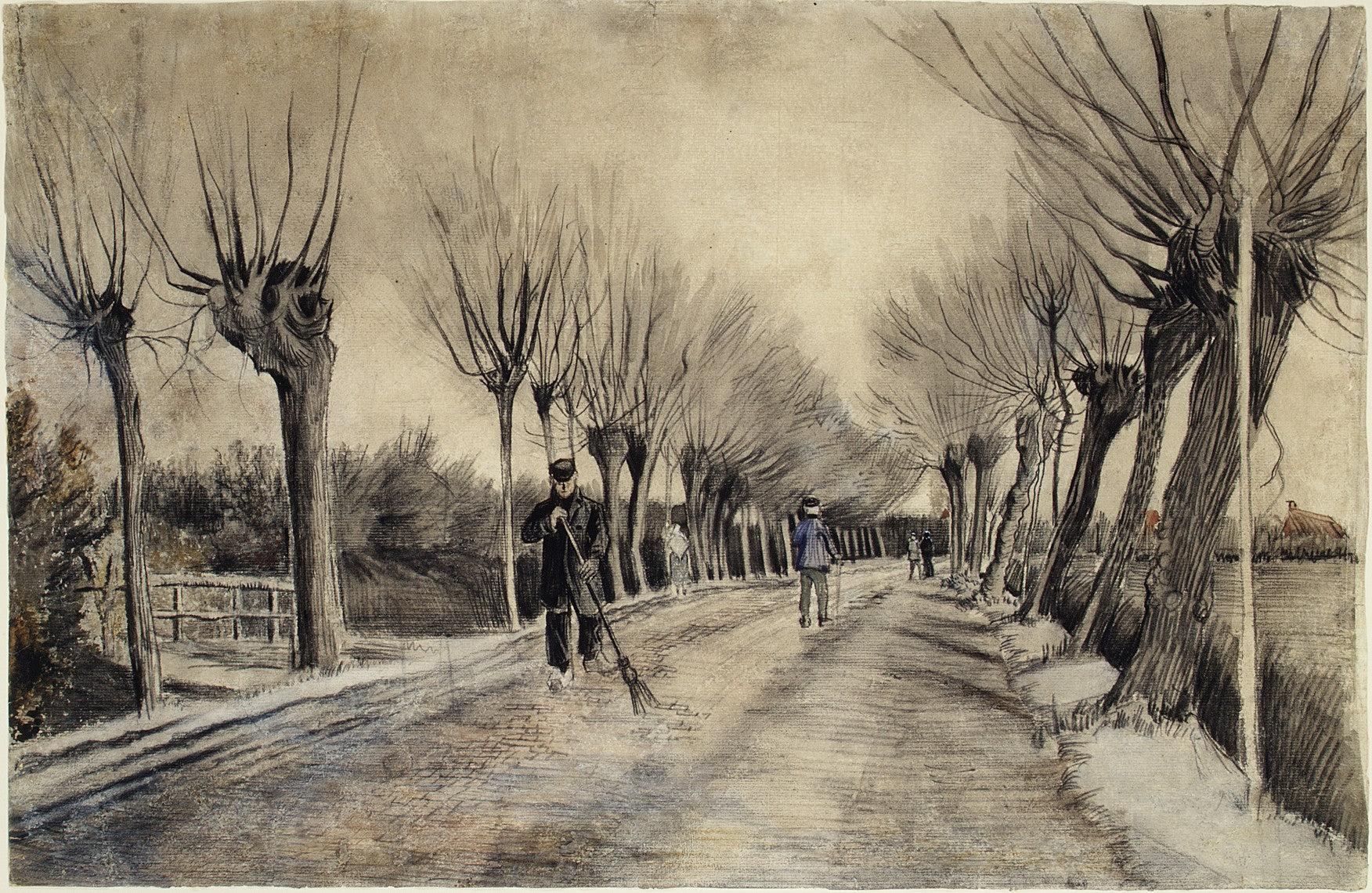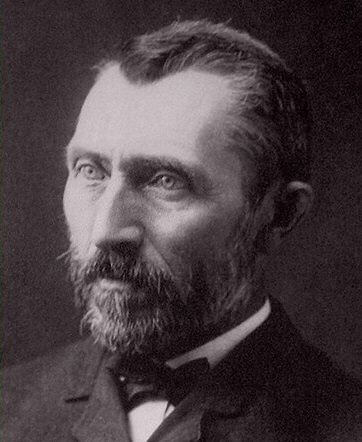
Road in Etten
In 1881, during a brief stay in the Dutch village of Etten, Vincent van Gogh began to devote himself seriously to the life of an artist. Deeply influenced by the works of Jean-François Millet and other artists who elevated scenes of rural labor, Van Gogh turned his attention to the everyday world around him, particularly the lives of peasants and working-class individuals engaged in quiet, routine tasks.
This masterful drawing exemplifies that early focus. A solitary man is shown sweeping a country lane, flanked by a row of bare pollard willows, their truncated, knotted forms echoing the humble perseverance of the figure himself. The scene is rendered with a sense of quiet dignity, free from sentimentality or idealization. Through carefully modulated lines and subtly rhythmic composition, Van Gogh imbues this simple act of cleaning a village street with a profound respect for labor and the people who perform it.
Though still early in his artistic development, Van Gogh already demonstrates a strong compositional instinct and an expressive sense of line. The repeated verticals of the willows draw the eye into the distance, while the lone figure anchors the scene in human experience. It is a world of muted tones and quiet gestures, yet full of purpose and presence.
This drawing is not merely an observation of rural life—it reflects Van Gogh’s deepening belief that art should convey the nobility of work, the spiritual value of simplicity, and the beauty found in the most unassuming moments. In this way, it foreshadows the compassion and emotional depth that would define his mature work.
Choose options


Road in Etten
About Artist

Vincent van Gogh
